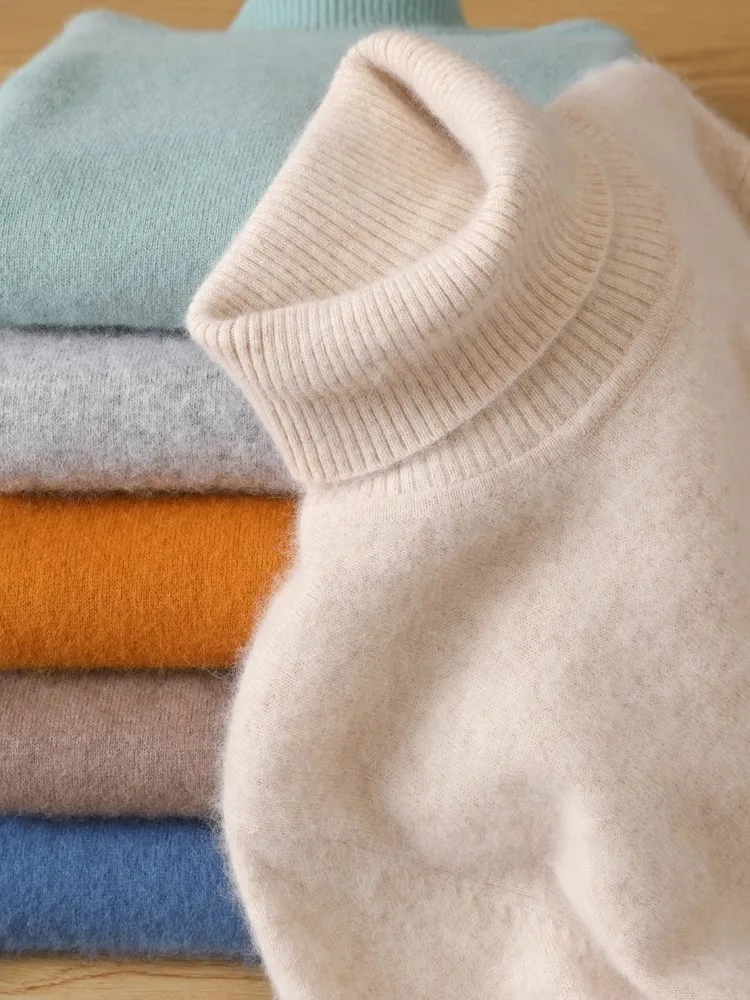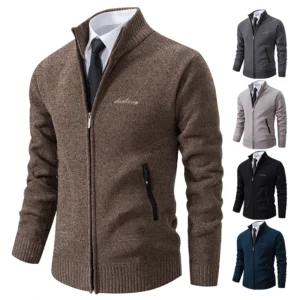Introduction: Understanding the Essential Cashmere Spectrum
Cashmere stands as one of nature’s most luxurious fibers, cherished for its exceptional softness, warmth, and longevity. When investing in cashmere garments, the thickness of the material becomes a crucial factor that influences everything from how the piece feels against your skin to how it functions in various environments.
The spectrum of cashmere thickness ranges from plush, substantial pieces to whisper-light, delicate options—each with distinct characteristics that make them suitable for different purposes. This thickness spectrum isn’t merely about personal preference; it fundamentally affects:
- How warm the garment will keep you
- How the piece drapes and fits your body
- When and where you can comfortably wear it
- The overall longevity and durability of the item
Understanding the nuances between thick and light cashmere helps you build a thoughtfully curated wardrobe that meets your specific needs. Whether you’re considering your first cashmere purchase or expanding your collection, knowing the fundamentals of styling tips for cashmere cardigans and other pieces will enhance your appreciation for this exceptional natural fiber.
Derived from the soft undercoat of cashmere goats, these premium fibers represent an investment in both comfort and style. The cashmere sweaters you choose should align with your lifestyle, climate, and personal aesthetic—with thickness being one of the most impactful variables in your decision.
The Science of Cashmere Thickness: Technical Specifications
Understanding the technical aspects of cashmere thickness empowers you to make informed purchases beyond simply feeling the material. Four primary factors determine how thick or light a cashmere garment will be:
Fiber Diameter (Microns)
The thickness of individual cashmere fibers, measured in microns, significantly impacts the final feel of the garment:
- Grade A cashmere: 14-15.5 microns (finest, softest fibers)
- Grade B cashmere: 16-19 microns (still soft, but slightly less refined)
- Grade C cashmere: 19+ microns (coarser feel, less expensive)
The finer the fiber, the softer the cashmere feels against your skin, though this doesn’t necessarily determine the overall thickness of the finished garment.
Ply Count
Ply refers to the number of yarn strands twisted together to create the final thread used in knitting:
- 1-ply: Single strand of yarn, creating lighter fabrics
- 2-ply: Two strands twisted together, offering balance between weight and durability
- 3-ply: Three strands, producing substantial weight and exceptional warmth
- 4-ply: Four strands, creating the heaviest, warmest cashmere items
The differences between 2-ply vs 4-ply cashmere become immediately apparent in both feel and function, with higher ply counts generally creating thicker, more insulating garments.
Gauge (Knitting Density)
Gauge refers to the number of stitches per inch in the knitted fabric:
- Low gauge (5-7GG): Fewer, larger stitches creating thicker, chunkier textures
- Medium gauge (8-12GG): Balanced construction for versatile wear
- High gauge (14-16GG): Many fine stitches producing lightweight, more fluid fabrics
Yarn Count (Nm Number)
This technical specification indicates the length of yarn per unit weight:
- Lower Nm numbers (e.g., 2/28): Thicker, heavier yarns
- Higher Nm numbers (e.g., 2/60): Finer, lighter yarns
These four elements work together to create the final weight and feel of cashmere garments. When examining product descriptions, look for these specifications to understand what type of cashmere experience to expect, rather than relying solely on subjective descriptions like “lightweight” or “heavy.”
Thick Cashmere Explored: Properties and Perfect Applications
Thick cashmere, typically constructed with 3+ ply yarns and lower gauge numbers, offers a distinctly luxurious experience that’s immediately recognizable when worn.
Sensory Experience of Thick Cashmere
When you hold thick cashmere, you’ll notice its substantial weight and structure. The material feels plush and sumptuous between your fingers, with a density that communicates quality and durability. This weightier construction creates a noticeable presence when worn, enveloping you in a cocoon of warmth and comfort.
Thermal Properties
The magic of thick cashmere lies in its exceptional insulation capabilities:
- Multiple plies trap more air between fibers, creating superior insulation
- Denser knit structures block wind more effectively
- Substantial weight provides immediate warmth upon wearing
- Performs best in temperatures below 50°F (10°C)
Ideal Applications for Thick Cashmere
The robust nature of thick cashmere makes it perfect for:
- Winter coats and outerwear pieces
- Substantial sweaters for the coldest days
- Cashmere turtlenecks that provide neck protection
- Luxury blankets and home accessories
- Investment pieces meant to last for many years
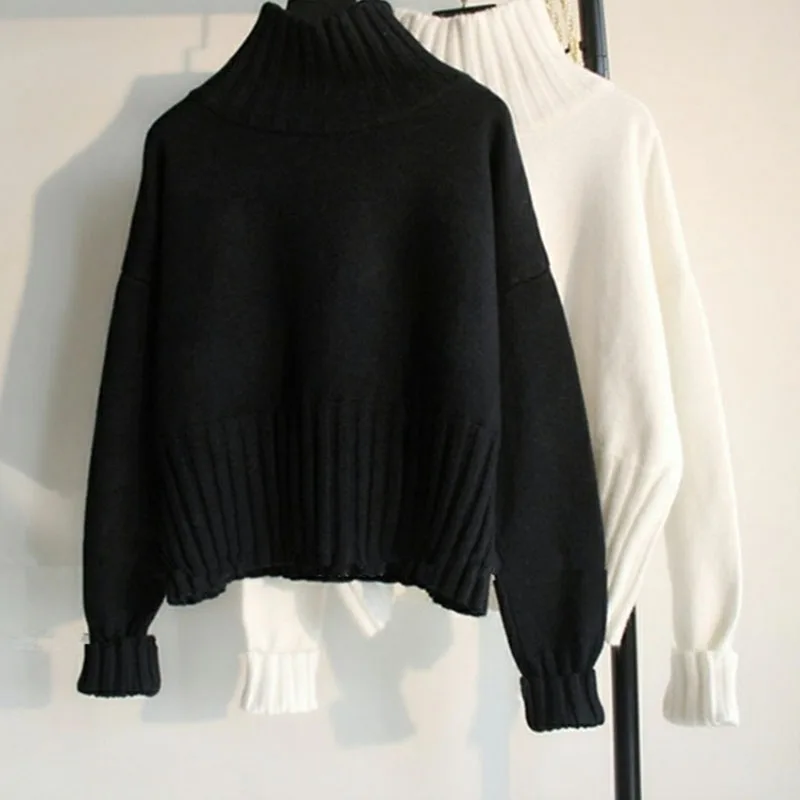
The structured drape of thick cashmere often creates a more defined silhouette, making it excellent for statement pieces that hold their shape. While heavier, quality thick cashmere should never feel stiff or uncomfortable—instead offering a reassuring weight that signals its protective qualities.
Light Cashmere Defined: Elegance in Delicacy
Light cashmere, typically crafted from 1-2 ply yarns with higher gauge numbers, offers an entirely different sensory and functional experience compared to its thicker counterparts.
Sensory Qualities of Light Cashmere
When you touch light cashmere, you’ll immediately notice its ethereal quality—almost impossibly soft with a flowing, liquid-like drape. The material feels featherweight in your hands, creating an almost gossamer tactile experience that belies its warmth capabilities. This lightness allows the fabric to move gracefully with your body, conforming to your shape rather than creating structure.
Breathability and Versatility
Light cashmere excels in several practical areas:
- Superior breathability allows air circulation, preventing overheating
- Exceptional layering potential without bulk
- Year-round wearability, even in milder climates
- Comfortable in temperatures between 50-70°F (10-21°C)
- Packs efficiently for travel
Perfect Applications for Light Cashmere
The delicate nature of light cashmere makes it ideal for:
- Fine knit sweaters for three-season wear
- Elegant scarves and wraps
- Short-sleeve cashmere sweaters for transitional weather
- Layering pieces under blazers or jackets
- Indoor wear in climate-controlled environments
Light cashmere creates a more fluid silhouette that drapes beautifully around the body’s contours. Its versatility makes it particularly valuable for adaptable wardrobes and variable climates, though it requires a bit more care to maintain its delicate structure.
Comparative Analysis: Thick vs. Light Cashmere
To help you visualize the key differences between thick and light cashmere options, this comprehensive comparison addresses the most important factors in your decision-making process:
| Attribute | Thick Cashmere | Light Cashmere |
|---|---|---|
| Warmth | Exceptional insulation for cold weather | Moderate warmth with better temperature regulation |
| Weight | Substantial, noticeable presence | Featherlight, barely-there feeling |
| Drape | Structured, holds shape | Fluid, follows body contours |
| Durability | Generally more resistant to wear | May show signs of wear sooner |
| Versatility | Primarily cold-weather focused | Three-season wearability |
| Layering | Functions as outerwear or standalone piece | Excellent for layering without bulk |
| Price | Often more expensive due to material quantity | Variable pricing based on fiber quality |
| Care Requirements | Slightly more forgiving | Requires more delicate handling |
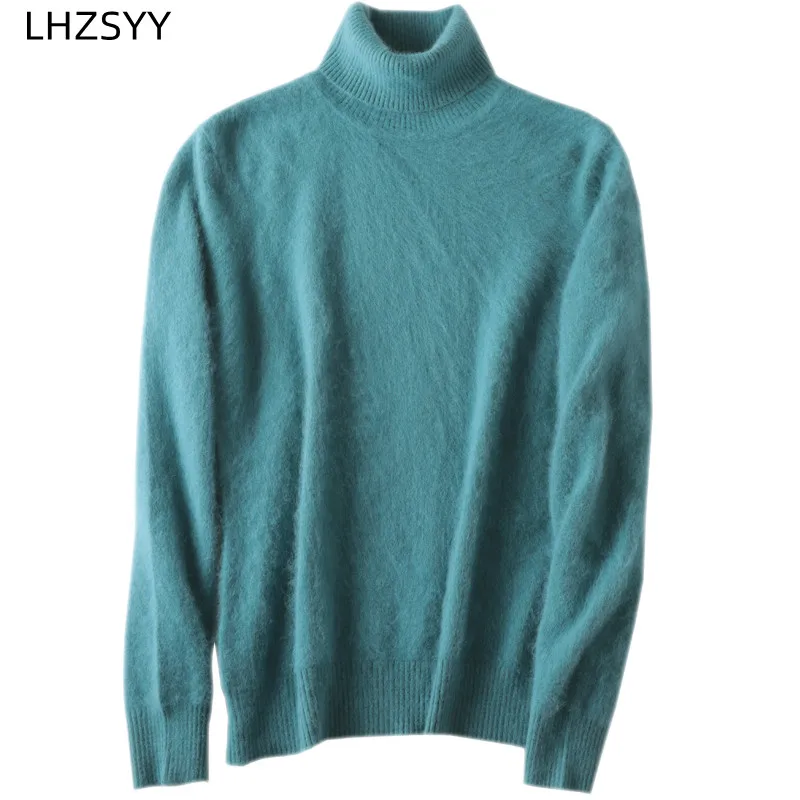
The choosing right cashmere thickness often becomes a balance of practical considerations and personal preferences. While thick cashmere offers unparalleled warmth and often greater durability, light cashmere provides versatility and elegant draping that thick versions cannot match.
Neither option is inherently superior—they simply excel in different scenarios and satisfy different needs in your wardrobe. Many cashmere enthusiasts find that having both options available provides the most complete solution for year-round luxury.
Decision Framework: How to Choose Your Ideal Cashmere Weight
Making the right choice between thick and light cashmere depends on several key factors unique to your lifestyle and preferences. Consider this structured decision framework to guide your selection:
Climate Considerations
Your local weather patterns should heavily influence your cashmere thickness choice:
– Cold climates (regular below-freezing temperatures): Prioritize thick cashmere for primary pieces
– Moderate climates with distinct seasons: Consider both thick and light options for year-round versatility
– Mild climates with minimal temperature variation: Light cashmere will likely provide adequate warmth while preventing overheating
Intended Use Cases
How and where you’ll wear the cashmere matters significantly:
– Professional environments: Light to medium-weight cashmere often works better in office settings
– Outdoor activities: Thick cashmere provides necessary protection against elements
– Travel purposes: Light cashmere offers packing efficiency and adaptability
– Home comfort: Thick cashmere excels for cozy loungewear and throws
Understanding the art of cashmere thickness helps you match the right weight to specific occasions and activities in your lifestyle.
Personal Comfort Factors
Individual preferences play a crucial role:
– Temperature sensitivity: Those who run cold will appreciate thick cashmere’s insulation
– Tactile preferences: Some prefer the substantial feel of thick cashmere, while others enjoy light cashmere’s barely-there sensation
– Weight tolerance: Consider how comfortable you are with heavier garments
Style Considerations
Your aesthetic goals impact thickness choices:
– Structured silhouettes benefit from thicker cashmere’s shape-holding properties
– Drapey, fluid looks require light cashmere’s graceful movement
– Styling cashmere cardigan versatile looks may require different weights for different effects
Practical Lifestyle Factors
Your daily routines and maintenance habits matter:
– Active lifestyles with varied environments might benefit from lighter, adaptable pieces
– Limited storage space might favor versatile light cashmere that works across seasons
– Maintenance willingness—thicker cashmere can be slightly more forgiving of minor care variations
The ideal approach for many is building a balanced cashmere collection with strategic pieces of varying weights, allowing you to enjoy the full spectrum of what this luxury fiber offers throughout the year.
Quality Indicators for Any Cashmere Thickness
Regardless of whether you choose thick or light cashmere, quality should remain the paramount consideration. Here’s how to evaluate cashmere quality across the thickness spectrum:
The Touch Test
Quality cashmere should always feel incredibly soft against your skin:
– Run your hand across the surface—it should feel consistently smooth
– Gently pinch the fabric—it should feel soft and supple, not scratchy
– Higher-quality cashmere often feels softer, regardless of thickness
The Light Test
Examining cashmere against light reveals construction quality:
– Hold the garment up to natural light
– Look for even knitting with consistent density
– Check for thin spots or irregularities that might indicate poor construction
– Thick cashmere should still show uniform construction without overly dense areas
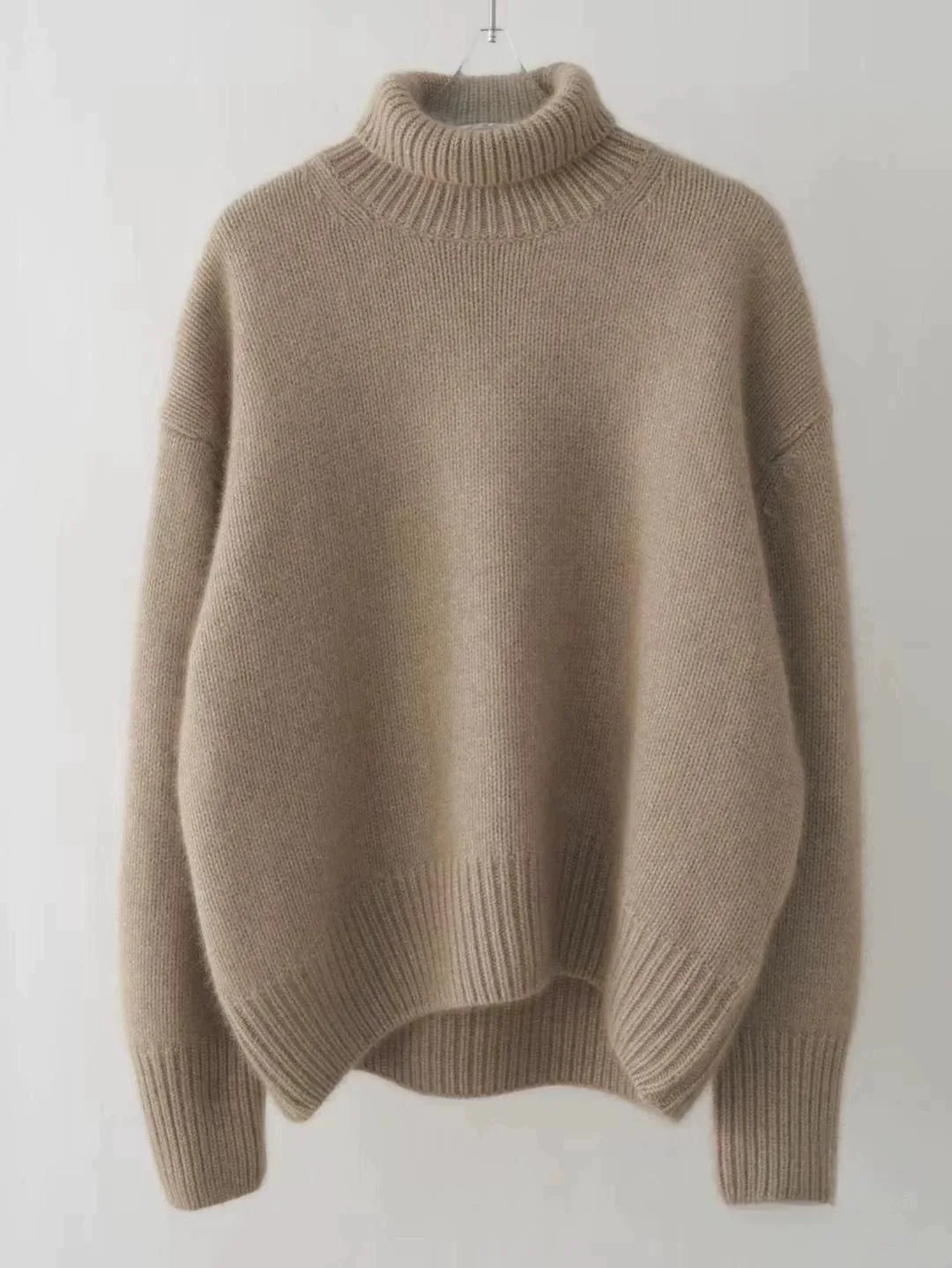
The Resilience Test
Quality cashmere recovers well from gentle stretching:
– Lightly stretch a small section of the fabric
– Superior cashmere quickly returns to its original shape
– Poor quality cashmere may remain stretched or deformed
The Pilling Assessment
Initial pilling resistance indicates long-term durability:
– Rub the fabric gently between your fingers
– Quality cashmere should resist immediate pilling
– Consider that even premium cashmere may eventually pill, but should do so less quickly
When browsing options like cashmere cardigans, remember that proper care maintains quality regardless of thickness. Always fold rather than hang cashmere to preserve shape, and follow gentle cleaning instructions specific to the garment’s weight.
Cashmere Wrap Sweaters, Women's Cashmere Pullovers
$75.89 Select options This product has multiple variants. The options may be chosen on the product pageCashmere Cable Knit Sweaters, Women's Cashmere Pullovers
Price range: $111.82 through $112.93 Select options This product has multiple variants. The options may be chosen on the product pageCropped Cashmere Sweaters, Women's Cashmere Pullovers
$155.77 Select options This product has multiple variants. The options may be chosen on the product page- Price range: $102.02 through $109.37 Select options This product has multiple variants. The options may be chosen on the product page
Oversized Cashmere Sweaters, Plus Size Cashmere Sweaters, Women's V-Neck Cashmere Sweaters
$136.87 Select options This product has multiple variants. The options may be chosen on the product page- Price range: $108.11 through $130.03 Select options This product has multiple variants. The options may be chosen on the product page
Beyond Thickness: Other Cashmere Considerations
Does cashmere weight affect care requirements?
While all cashmere requires gentle care, light cashmere typically needs slightly more careful handling. Its delicate construction makes it more vulnerable to stretching during washing and drying. Thick cashmere, while still requiring proper care, tends to be more forgiving of minor care variations. Both weights benefit from hand washing in cool water with gentle detergent and flat drying away from direct heat or sunlight.
Can light cashmere still provide adequate warmth?
Absolutely. Despite its ethereal weight, light cashmere offers surprising thermal regulation. The natural properties of the cashmere fiber—with its hollow core—provide insulation regardless of thickness. Light cashmere excels at temperature regulation, making it comfortable across a broader range of conditions, while thick cashmere maximizes warmth in truly cold environments.
Is thick cashmere always better quality than light cashmere?
No. Thickness and quality are independent variables. High-quality light cashmere made from fine, long fibers can be more valuable and durable than thick cashmere constructed from inferior raw materials. The 15 stylish ways to wear cashmere cardigans of different weights demonstrates how both can be excellent quality when properly sourced and constructed.
How does cashmere thickness affect garment longevity?
Generally, thicker cashmere may show wear more slowly due to its substantial construction. However, quality light cashmere that receives proper care can last just as long. The key factors affecting longevity include the quality of the raw fibers, construction methods, and most importantly, how you care for the garment over time.
Advanced Cashmere: Special Weaves and Blends
Beyond simple thickness variations, special weave patterns and fiber blends create unique cashmere experiences that expand your options even further.
Different knitting techniques dramatically alter how cashmere performs and feels. Cable knit cashmere sweaters add significant texture and thickness without necessarily increasing the ply count, creating visual interest while enhancing warmth through the dimensional structure. Ribbed patterns provide stretch and recovery while creating visual texture that adds perceived thickness.
Cashmere blends introduce complementary fibers to modify performance characteristics:
- Cashmere-silk blends (typically 70% cashmere/30% silk) enhance drape and add subtle luster while maintaining softness
- Cashmere-cotton combinations improve durability and reduce price while creating excellent transitional pieces
- Cashmere-wool blends increase durability and often provide more structured silhouettes
Innovative production techniques now allow for specialized cashmere fabrics that weren’t previously possible, including ultra-light cashmere that maintains durability and washable cashmere that resists shrinkage and felting. These advances expand the possibilities for incorporating cashmere into diverse wardrobe applications.
Final Considerations: Making Your Cashmere Investment
The choice between thick and light cashmere ultimately comes down to aligning the material with your personal needs, local climate, and wardrobe goals. Many cashmere enthusiasts find that building a thoughtful collection across the thickness spectrum provides the most satisfaction and versatility.
Consider starting with one high-quality piece that addresses your most frequent need—perhaps a medium-weight women’s cashmere turtleneck that bridges seasons—then gradually expanding your collection to include both thicker and lighter options as your appreciation for this remarkable fiber grows.
Remember that regardless of thickness, quality cashmere represents a long-term investment in both comfort and style. By understanding the unique properties of different cashmere weights and selecting pieces thoughtfully, you’ll develop a collection that provides years of luxurious wear and timeless elegance.

